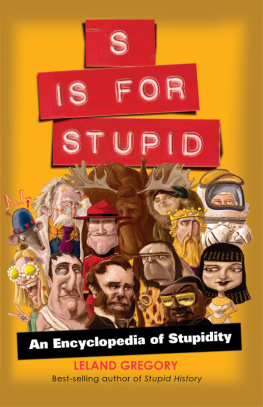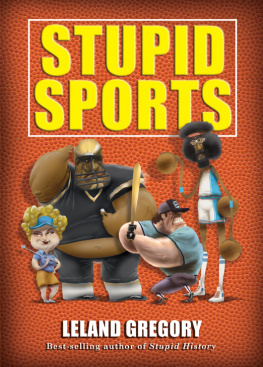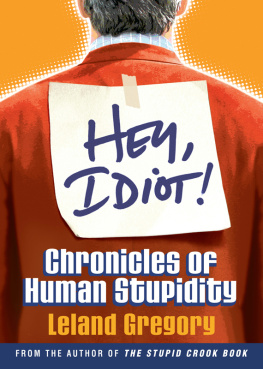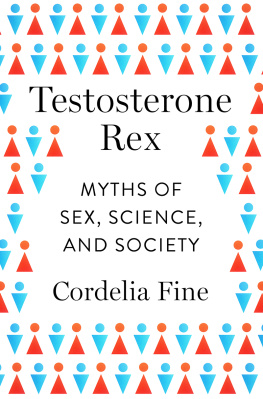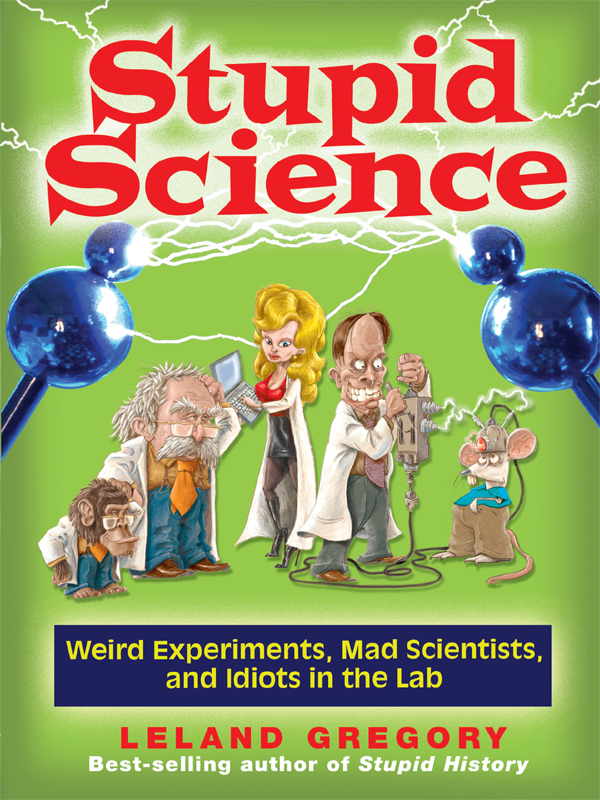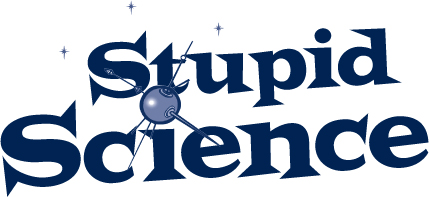
Other Books by Leland Gregory
Whats the Number for 911?
Whats the Number for 911 Again?
The Stupid Crook Book
Hey, Idiot!
Idiots at Work
Bush-Whacked
Idiots in Love
Am-Bushed!
Stupid History
Idiots in Charge
Cruel and Unusual Idiots
Whats the Number for 911?: Second Edition
Stupid American History
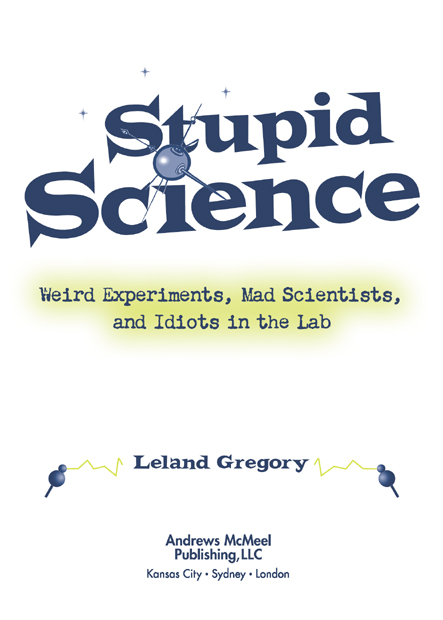
Stupid Science copyright 2009 by Leland Gregory. All rights reserved. Printed in the United States of America. No part of this book may be used or reproduced in any manner whatsoever without written permission except in the case of reprints in the context of reviews. For information, write Andrews McMeel Publishing, LLC, an Andrews McMeel Universal company, 1130 Walnut Street, Kansas City, Missouri 64106.
E-ISBN: 978-0-7407-9211-3
Library of Congress Control Number: 2009925646
www.andrewsmcmeel.com
Book design by Holly Camerlinck
Illustrations by Robert Meg
Cover design by Tim Lynch
Cover art by Kevin Brimmer
Attention: Schools and Businesses
Andrews McMeel books are available at quantity discounts with bulk purchase for educational, business, or sales promotional use. For information, please write to: Special Sales Department, Andrews McMeel Publishing, LLC, 1130 Walnut Street, Kansas City, Missouri 64106.
Wide Eyed Wonder
According to an article in the July 7, 2008, edition of the London newspaper Daily Mail, Britains Sea Life Centre announced a study to determine whether octopuses use certain tentacles or random tentacles when faced with a complex situation. In order to test their hypothesis, the center announced they would give the octopuses Rubiks Cubes to play with.

Larger Kangaroos
Leap Farther,
Researchers Find
Los Angeles Times headline, November 2, 1995
A Lack of Brains
Scientists at the Institute for Animal Health in Edinburgh secured a 217,000 government grant and spent five years trying to discover whether bovine spongiform encephalopathy (commonly called mad cow disease) had crossed the species barrier from cows to sheep. It came to light in October 2001 that the program was under investigation after it was discovered that scientists had inadvertently been testing cattle brains instead of sheep brains for the entire five years.

When Pigs Fly
Faced with the threat of the deadly swine flu, the U.S. government spent $135 million in 1976 on a national vaccination program. The vaccine was directly responsible for the deaths of twentythree people, and hundreds more suffered reactions ranging from paralysis to heart attacks.
Just Monkeying Around
Its the ageold conundrum: Could an infinite number of monkeys with an infinite number of typewriters writing for an infinite amount of time reproduce the works of Shakespeare? Researchers at Plymouth University in England, not having an infinite amount of grant money, wanted to see what six Sulawesi crested macaque monkeys would write over a fourweek period with a computer. According to a report in the May 9, 2003, issue of the Guardian of London, the simian Shakespeares composed roughly five pages of text between them, consisting mostly of the letter S. According to Professor Geoff Cox, who designed the test, the monkeys spent a lot of time sitting on the keyboard. Another thing they were interested in was defecating and urinating all over the keyboard, added researcher Mike Phillips.
Dont Be So Testy!
Georgia State University psychology professor James Dabbs discovered in 1998 that trial lawyers (both male and female) have about 30 percent more testosterone in their bodies than other people. Dabbs stated in his article in the Journal of Applied Social Psychology that high testosterone levels are often linked to aggressiveness and antisocial behavior. We all knew that lawyers were full of something; now we know its testosterone.
But with a Whimper
A science experiment at Winona High School in Texas turned out to be a real blast. With the approval of his physics teacher, a seventeenyearold student brought in a homemade cannon designed to use gunpowder that shoots a little projectile in the air, said school superintendent Rodney Fausett. But when the metal tube was being loaded with the gunpowder, it exploded, sending the small little tube through the wall of the buildinga metal wallso it had a pretty good oomph to it, said an investigator from the U.S. Bureau of Alcohol, Tobacco, Firearms and Explosives. According to a May 19, 2006, article in the Dallas Morning News, parents had expressed concern over the demonstration, but school officials blew them off.
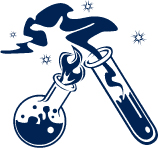
Primate of the Month
An article in the September 22, 2008, edition of New Scientist revealed that scientists at Emory Universitys primate research center in Atlanta, Georgia, conducted experiments to see whether chimps could remember other chimps through whole body integration (the ability to identify a whole object by seeing only a small portion of that body). Researchers concluded that chimps do have that ability because they identified, above mere random chance, other chimps in the program after being shown pictures of their butts.
Size Does Matter
Research conducted by Indiana University on the differences between Australian dung beetles and U.S. dung beetles was published in the September 6, 2008, edition of New Scientist. The short and long of the results were this: Australian dung beetles have smaller horns and bigger penises, and the Americans are just the opposite. Researchers noted that in order to mate with females, American male dung beetles routinely fight other males, whereas the wellendowed Australian dung beetle relies more on trickery.
The Illinois Departmentof Conservation spent $180,000 to study the contentsof owl vomit.
Calling Dr. Scholl
What do stinky cheese and unclean feet have in common? They both attract mosquitoes. Scientists from all corners of the globe gathered in Africa with wheels of smelly cheese in an attempt to isolate the chemical that is common to both cheese and stinky feet in hopes of using it as bait in mosquito traps. According to a November 8, 1996, article from Reuters, the scientific theory is based on research that hungry female mosquitoes are attracted to such smells.
Green with Envy
Amateur scientists and hobbyists, who sometimes call themselves biohackers, are constantly at work in their garages or homemade laboratories making more than stink bombs. According to a January 1, 2009, article from the Associated Press, one amateur paid about $100 for jellyfish DNA, which contains a green fluorescent protein, and then spent $25 to build a DNA analyzer. She used the jellyfish DNA to alter yogurt bacteria so that when they detected melamine (a toxic chemical responsible for the 2008 Chinese milk scandal), they would glow green.


